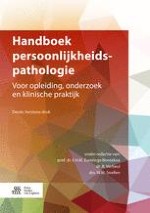Samenvatting
De introductie van as-II in de DSM-III heeft ons sinds 1980 veel wetenschappelijke informatie opgeleverd over de diagnostiek en behandeling van persoonlijkheidsstoornissen. Toch bleef er fundamentele kritiek op deze wijze van classificeren. In aanloop naar de DSM-5 besloot de APA-werkgroep niet langer te sleutelen aan de diagnostische criteria uit de DSM-IV, maar een nieuw model te introduceren dat meer recht doet aan recente wetenschappelijke inzichten en de praktijk van diagnostiek, indicatiestelling en behandeling. Bij de introductie van de DSM-5 bleek dit model nog onvoldoende uitontwikkeld en gevalideerd. Uiteindelijk werden daarom de persoonlijkheidsstoornissen uit de DSM-IV onveranderd opgenomen in de DSM-5 (in deel II), en werd het alternatieve model met al zijn innovaties vooralsnog opgenomen in deel III van de DSM-5. Hierin wordt een nieuwe ernstmaat voor persoonlijkheidsstoornissen geïntroduceerd, evenals een model om persoonlijkheidstrekken dimensioneel in kaart te brengen. Over dit revolutionaire Alternatief DSM-5-model voor persoonlijkheidsstoornissen gaat dit hoofdstuk.
